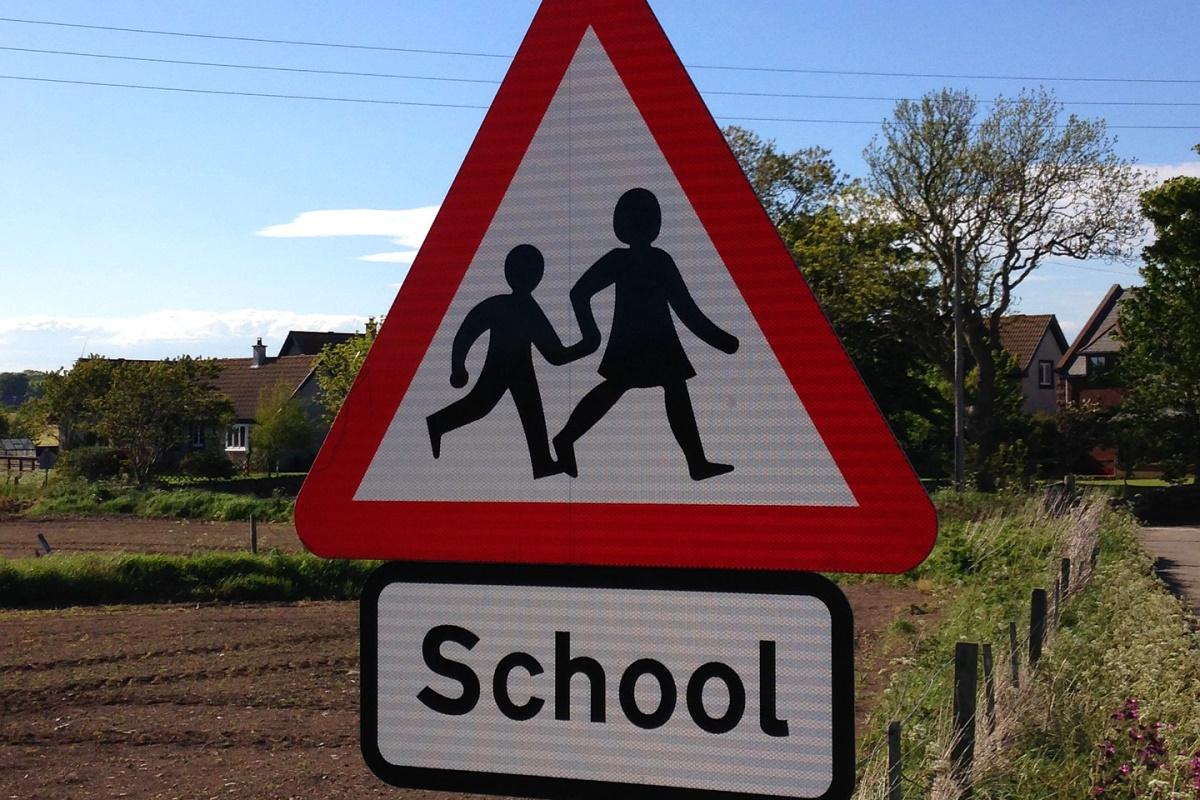
Changes to North Yorkshire Council’s (NYC) home-to-school transport policy are causing anger and frustration among parents across the county.
The authority has moved from a ‘catchment’ system to only providing free transport to a child’s nearest school.
The council says it needs to make the change to help address a £48m budget shortfall.
But critics say the change is causing unnecessary disruption, uncertainty and inconvenience to hundreds of families — and have questioned if the new policy will actually save the authority any money.
Local democracy reporter Joe Willis put parents’ concerns to Amanda Newbold, North Yorkshire Council’s assistant director for education and skills:
1. Is it the case that the potential savings quoted by the council of £4.2m from the change in home-to-school policy would require 100 per cent of affected children to not take up the option for free school transport? Does the council think this is realistic or is the use of the figure misleading to the authority’s own councillors and the wider public?
The savings of up to £4.2 million were identified using data from the 2023/24 academic year, taking into account the costs at the time and applying the criteria under the new policy.
There are many variables that can affect the new policy such as parents’ preferences for admissions, a school’s popularity and the spaces that are available, eligibility for free school meals and a family’s childcare arrangements.
A report presented to councillors showed a range of how much could be saved to take these variables into account.
Free transport applies to eligible pupils – typically children who attend their nearest school with places available and who qualify because they live over the distance from their home to their school as set out in the policy.
2. Isn’t it correct that the only way the policy change makes savings is by pushing parents to pay for their child’s transport to school, rather than from cost savings made by shorter and fewer vehicle journeys? Does the council believe making savings in this way is fair?
Parents are responsible for ensuring their child attends school. This means they must take all the action necessary to enable their child to attend school.
For most parents, this includes making arrangements for their child to travel to and from school. Local authorities must make arrangements, free-of-charge, for eligible children to travel to school.
This Department for Education blog is really helpful – https://educationhub.blog.gov.uk/2023/11/03/free-school-transport-explained-eligible-free-travel/
The changes are designed to make our home to school transport policy fair to all families, responsible and affordable.
3. Isn’t it the case that if all parents affected by the change chose to send their child to their nearest school, as calculated by NYC, the policy would actually cost more than the current system?
Providing school transport has become the third-largest expenditure for us at £51 million a year – behind adult social care and waste management – and has more than doubled since 2018/19 when the policy was last reviewed.
We realise there may be a number of new routes in some areas of the county over the next few years, but we will also see some routes no longer being required and so overall the new policy is expected to bring savings.
There will be a short period when the current and former policy apply to different groups of children and so the savings are modelled to come into effect over a seven-year period.
4. Does the council not accept that asking parents to choose a school for their child when no details of how the child would get to that school have been revealed, including the route taken, the distance of the journey or the mode of transport, is unfair?
Parents and carers continue to have a choice as to where to send their children to school. It is important for parents to factor in travel costs if they choose a school that is not their nearest. The new policy does not directly affect where children go to school – that is still the choice of the parent or carer and the admissions process is unaffected by the change.
A digital tool to help parents and carers find out their nearest school and make an informed decision when they are looking to apply for school places has been launched. The digital mapping tool is used to determine the closest school to each home address. The distance is calculated using roads, footpaths, bridleways and public rights of way. We know that thousands of parents have successfully accessed the system during this year’s admissions round.
The distance measurement is used to determine eligibility for travel assistance after a child has been offered a school place, and where a child is eligible to free home to school travel, the council has a duty to make suitable travel arrangements.
In most cases children who are eligible will join existing contracts, however in the situation where this involves contracting a new transport service, each route is assessed to ensure it is safe for travel.
We would like to clarify that the routes used by the mapping system are not as the ‘crow flies’ and are unlikely to be the exact journey used to travel to school – this is because the contracts that are arranged are not necessarily the shortest routes. Instead, journeys need to take account of the home locations of all passengers on the route, local knowledge, vehicle size and time spent travelling.
5. Would the council’s own officers and members be happy and willing to make a decision on their child’s welfare and education under these circumstances?
The revised home to transport policy is aimed at ensuring that there is a fair approach for all families in North Yorkshire, while providing the best value for our taxpayers.
This policy applies to the children of officers who attend school in North Yorkshire too. The new policy does not directly affect where children go to school – that is still the choice of the parent or carer.
6. The figures on savings expected from the implementation of the policy include nothing for the cost of implementation, transition or knock-on costs. What are the estimated costs of delivering this policy? Isn’t it misleading to say there will be savings if no costs are factored in?
The cost of assessing eligibility and for delivery of transport provision will require the same processes as in other years. The admissions process is an annual cycle and remains unchanged. All pupils are currently assessed for transport eligibility and this will remain the same this year. Travel arrangements will be commissioned in the same way as in other years.
7. Does North Yorkshire Council accept that it has no legal requirement to move from a ‘catchment’ system to a ‘nearest schools’ system for deciding on the provision of free home-to-school transport?
Increases in the cost of fuel, transport and insurance mean that we have to target our resources at those who most need it and who are eligible to travel assistance in line with legislation. We also need to ensure our policy is in line with the Department for Education’s guidance.
We are one of the highest spending local authorities in the country on home to school transport. If we had done nothing, the rising cost of home to school travel could have a crippling effect on the other services we must deliver by law. The previous eligibility under the “catchment” criteria was a discretionary provision.
The changes have brought us in line with many other comparable and neighbouring local authorities.
8. What is the reasoning behind the council’s apparent unwillingness to use its discretionary power to apply an approach more acceptable to parents living in rural areas?
The new policy includes free transport for eligible pupils to their nearest school to their home address.
There is help available with travel to a child who lives within the statutory walking distance to their catchment or nearest suitable school if the route has been assessed as “unsafe” and there is no other alternative route below the statutory walking distance.
Discretionary powers have been extended for the eligibility of travel assistance for secondary age pupils from low-income families to attend one of their three nearest suitable schools within two to 12 miles. This is to reflect the rural context of the county and ensure low-income families in rural areas are supported.
9. NYC’s digital mapping tool to determine a child’s nearest school is no longer live on its website. Is this because it was producing scenarios where parents in the same community were getting different results, with two, three and even four different schools being shown as ‘nearest’?
The tool is live on the website and parents can locate it in the home to school travel policy section of the site, under ‘find your nearest school’.
10. Has the council abandoned its digital mapping tool due to these quirks? By asking parents to send in their location and then advising them of their nearest school, isn’t the authority overriding the digital tool’s results and implementing a partial return to a catchment system without informing the public?
The digital tool helps parents and carers to find their nearest school, and to make an informed decision when they are looking to apply for school places. Please note, the digital mapping tool does not plan routes to school.
The digital mapping tool is live and remains in use.
11. The policy was voted on by councillors on July 24 and then implemented from September 1, with parents expected to submit their applications for secondary school places by October 31. Hasn’t the change been rushed through and introduced without a full understanding of its implications on North Yorkshire families by officers or councillors?
In January, the executive member for education, learning and skills, Cllr Annabel Wilkinson approved plans for a consultation.
The consultation took place from February 12 to April 26, and involved a survey on our website.
It was promoted via the media and on our social media channels, briefings were given to headteachers and school leaders, emails sent to schools asking for details to be passed to families, webinars staged with schools and meetings organised with schools and members when requested.
A total of 16 public face to face events in venues across the county and held during the day and in the evenings. A total of 1,299 responses were received to the online survey. Responses were received from a range of stakeholders, including parents and carers, schools, pupils and parish councils.
The executive approved the proposed changes for the home to school transport policy on July 16, before the decision was ratified at full council on July 24.
The policy was required to be published alongside the admissions process by September 12.
12. What guarantees can the council give parents of upper Swaledale and Arkengarthdale that it will get their children home safely if there is heavy snowfall during the school day when their children are attending schools in Cumbria and County Durham because these were their nearest and the only schools the council was willing to pay for transport to and from?
We understand the concerns from parents and carers around transporting children and young people to the school of their choice.
In line with national time lines and a process that is unchanged from previous years, parents will be informed of their child’s school place on ‘National Offer Day’ which is March 3, 2025, for secondary aged children, and April 16, 2025, for primary aged children. Children’s eligibility for assistance with home to school travel will be assessed after each national offer day.
Once eligibility for assistance is known, officers will determine whether eligible children can be accommodated within existing contracts or whether new contracts, including new routes, are required. This is in accordance with the council’s long-standing arrangements for the provision of home to school travel. No new routes have been set up and will not be established until the admissions process is complete.
Whenever new contracts are procured, risk assessments are carried out with operators.
The contracts that are arranged are not necessarily the shortest routes as they will take account of the home locations of other passengers on the route, local knowledge, vehicle size and time spent travelling.
Once contracts are agreed it is for the provider to undertake dynamic risk assessments. This is the same process as already takes place. Any parent who has concerns or questions about their child’s transport arrangements may liaise with the transport team about their child’s arrangements once these are in place.
The council’s policy sets out the arrangements that would occur if there was severe weather, this remains unchanged from previous years:
Additional Information about Travel Arrangements
Severe weather
In circumstance where severe and adverse weather conditions are forecast, which may result in a school closure, schools will follow their emergency procedures and;
• inform parents and staff.
• inform home to school transport contractors.
• inform the council.
The council will make suitable arrangements to provide transport to enable eligible children to return home. The arrangements may be different to the normal commissioned provision in the event of an emergency.
School closures are published on the council website and through local radio stations.
12. How does the policy change, and the anger felt by parents affected, correlate with the council’s stated aim of being ‘the most local large council’?
We understand the concerns from parents and carers around transporting children and young people to the school of their choice. The policy is now applied in a more consistent and fair way. It ensures we are legally compliant, and importantly it means we can manage the escalating costs of this service while protecting those who are most in need of our help. The new policy ensures equality and transparency of provision for parents and children.
We are facing an annual £48 million shortfall in our budget by March 2027 and we need to bring the policy in line with revised guidance from the Department for Education to ensure it and other essential front-line services are sustainable.





 Feens Farewell Gig in Scarborough Tonight
Feens Farewell Gig in Scarborough Tonight
 Health Chief Reports Teen Bullying Worries in North Yorkshire
Health Chief Reports Teen Bullying Worries in North Yorkshire
 Scarborough Athletic Play First of Home Double
Scarborough Athletic Play First of Home Double
 Whitby Town Face Yet Another Six-Pointer To Kick Off Final Five
Whitby Town Face Yet Another Six-Pointer To Kick Off Final Five
 Final Month Relegation Shoot-Out For Bridlington Town
Final Month Relegation Shoot-Out For Bridlington Town
 Yorkshire Coast Rugby Union Season Concludes
Yorkshire Coast Rugby Union Season Concludes
 Pickering Town Bring Curtain Down With Home Clash
Pickering Town Bring Curtain Down With Home Clash
 Injured Yorkshire Coast Seal Back in the Water
Injured Yorkshire Coast Seal Back in the Water
 Flamingo Land Welcomes Baby Giraffe
Flamingo Land Welcomes Baby Giraffe
 Scarborough and Whitby MP to Launch Petition for Return of Stroke Services
Scarborough and Whitby MP to Launch Petition for Return of Stroke Services
 UK Mayors Being Urged to Buy Scarborough Buses
UK Mayors Being Urged to Buy Scarborough Buses
 Free Music Events in Scarborough to Raise Funds for Andy's Man Club
Free Music Events in Scarborough to Raise Funds for Andy's Man Club










Comments
Add a comment